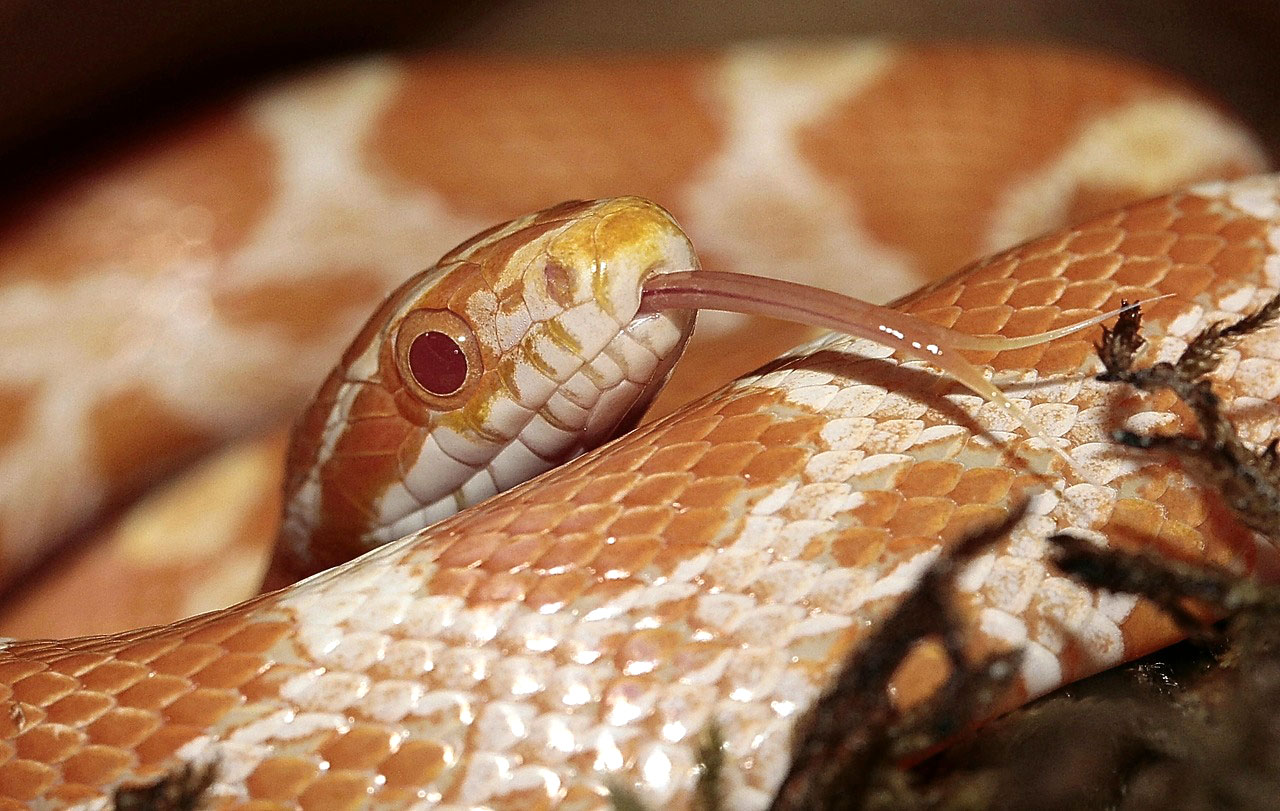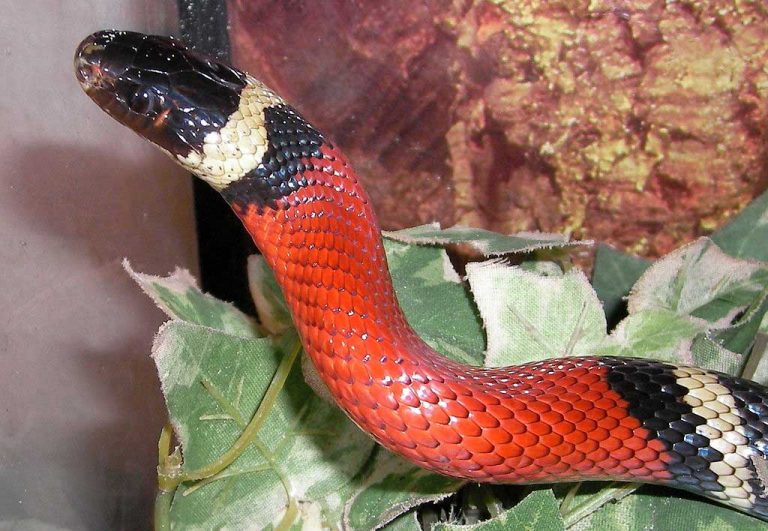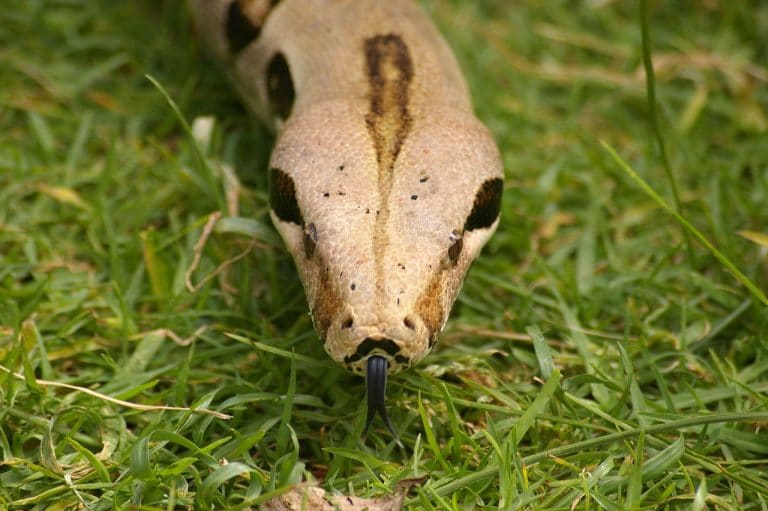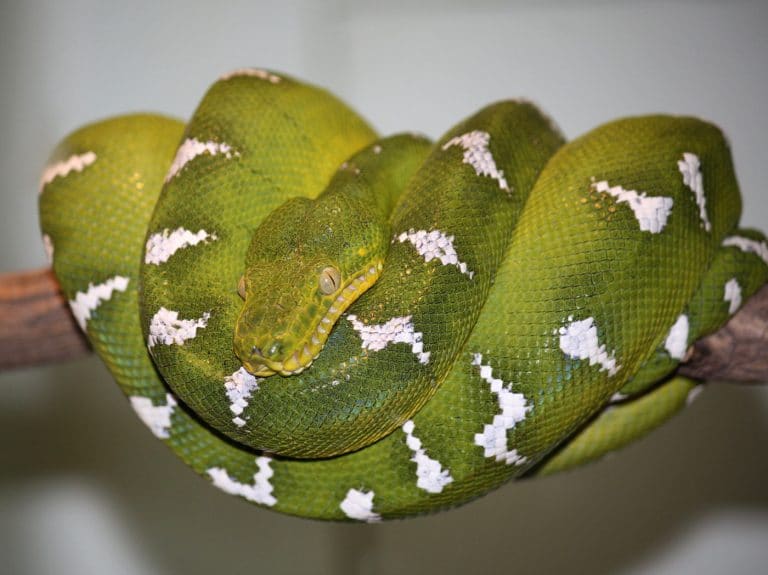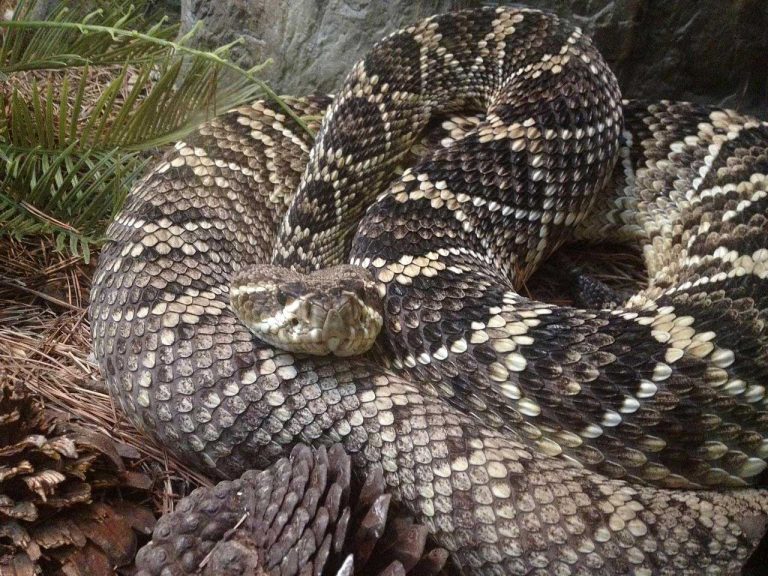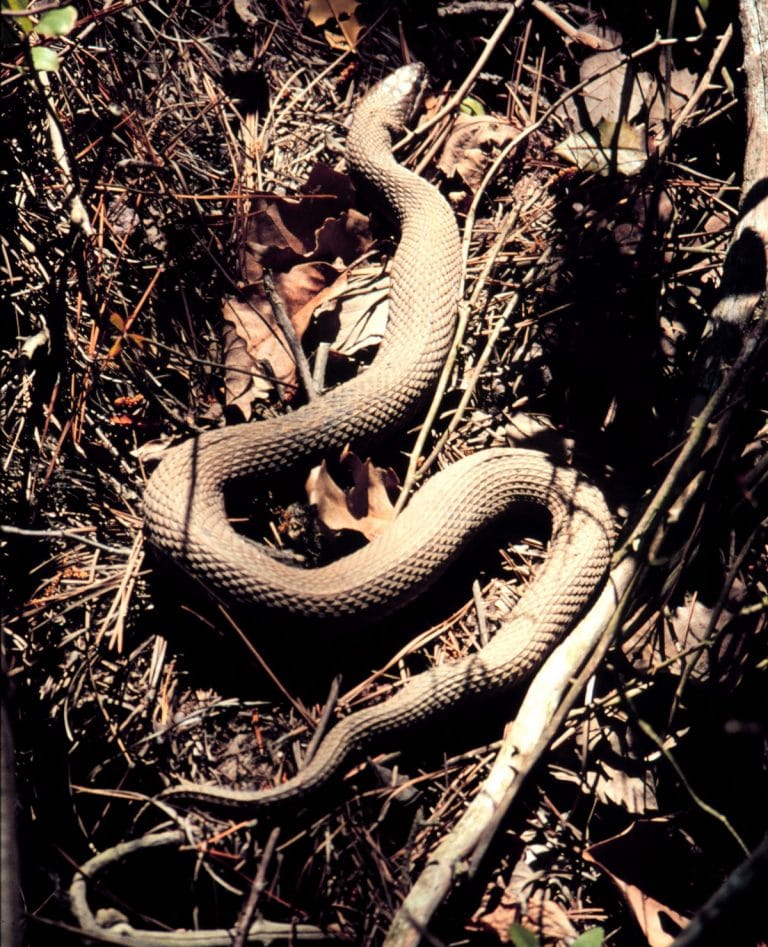Corn Snakes
Scientific Classification
| Kingdom: | Animalia |
| Phylum: | Chordata |
| Subphylum: | Vertebrata |
| Class: | Reptilia |
| Subclass: | Lepidosauria |
| Order: | Squamata |
| Suborder: | Serpentes |
| Family: | Colubridae |
| Subfamily: | Colubrinae |
| Genus: | Pantherophis |
| Species: | P. Guttatus |
| Binomial name: | Pantherophis guttatus |
Corn snakes are a non venomous snake species. They are spectacular in color and patterns. These species are gaining in popularity among snake enthusiasts and keepers.
There are two schools of thought on how the Corn Snake derived its name. In the past, farmers used to store harvested corn ears in wooden structures called cribs. Rats and mice used to frequent these cribs. The snake species that came to feed on these rodents, came to be called corn snakes.
The checkerboard patterns seen on the back and belly of these snake species are similar to the checkered pattern of Indian corn or maize. This could be the reason behind the name, ’corn snake’.
People also call them red rat snakes.
Corn snakes are slender creatures with lengths ranging from 24 to 72 inches. The colors are usually brownish yellow or orange and they have black-edged red blotches running down the middle of the back. The black and white marks on the belly form a checkerboard pattern. The pattern and coloration vary in individual snakes, depending a lot on the regions they inhabit and their age. Adults have brighter coloration than hatchlings.
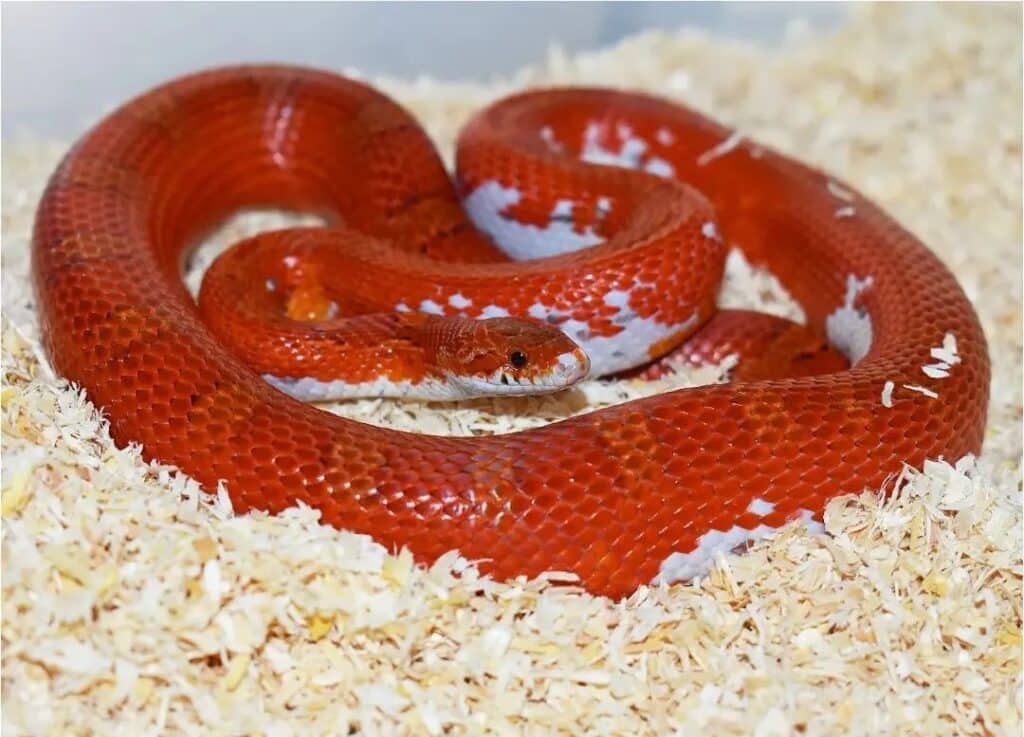
Anatomy
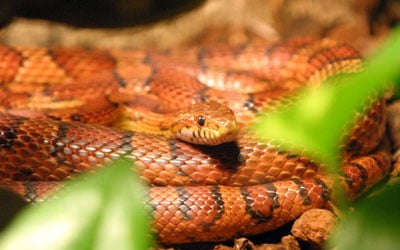
On an average, corn snakes grow about three to five feet in length by the time they reach four years of age. But they keep on growing. The longest corn snake recorded, measured 6 feet (1.83 centimeters) in length.
The patterns on each snake is unique, like the stripes of the Zebra. We can consider it the snake’s unique identification, like fingerprints. The glossy coat of the adult corn snake sports bright, vivid, black-edged orange, red or brownish blotches on a background ranging from grayish, black or orange. The snakes usually have 25 to 38 of such dorsal blotches with similar numbers of lateral blotches. These dorsal blotches are generally wider along the snake’s length. In the middle of the body of the snake, around the circumference, there are commonly 25 to 38 of such dorsal scale rows. These scales are keeled, but only lightly.
The alternating rows of black and white or orange ventral scales form a pattern that resembles maize corn. The coloration of the corn snakes from North Carolina, is duller. There are two black stripes on the underside of the tail along with ‘spear, patterns on the head and neck.
Curiously, the corn snakes from regions around south east Florida have dull grayish coloration. These snakes are anerythristic, meaning that their genes do not have the ability to produce the red pigmentation. This is the reason for their grayish body and black blotches. Then there are corn snakes that are amelanistic, meaning they cannot produce black pigments. There are certain corn snakes that are anerythristic and amelanistic at the same time. They are the snow corn snakes. There are several other corn snake types with their own names and characteristic patterns.
Behavior
Corn snakes are basically diurnal (active during the day) reptiles. They are adept at tree climbing. They frequent old, abandoned buildings in search of prey. They are very secretive in nature. During most of the daytime, they are underground, prowling in rodent burrows. They often lie concealed under logs, loose bark, leaf litter and debris.
Habitat
We can find corn snakes in the eastern parts of the United States. They range from southern New Jersey to Florida and west to Louisiana and certain parts of Kentucky. They are really abundant in Florida as well as in the southern U.S. They frequent abandoned buildings, barns, groves, rocky hillsides and wood lofts.
As a Pet
Corn snakes make spectacular pets. They do not make extraordinary demands on your time, money or your patience. They are not very difficult to care for. They do become tame with time.
Breeding
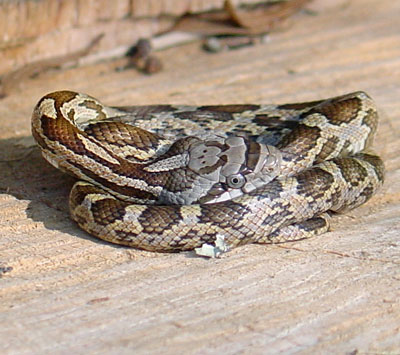
The breeding season is during the period of March to May. Corn Snakes are egg layers (oviparous) with 10 to 30 eggs per clutch. The females lay eggs in decaying vegetation, rotting tree stumps or any other location where there is sufficient heat and humidity for incubating the eggs. The eggs hatch after a gestation period of 60 to 65 days. The eggs hatch between July and September. The baby Corn snakes (hatchlings) measure ten to fifteen inches in length. The Corn snakes take about 18 to 36 months to mature.
Housing
Corn snakes, being relatively small creatures, do not need large enclosures. A ten gallon aquarium or enclosure of similar capacity will do well for a baby corn snake. Once they reach adult size, you should get a 30 gallon, or, preferably, 50 gallon aquarium. Other than the mere size of the aquariums, there a number of factors that you should keep in mind when opting for corn snakes as pets.
Remember that all snakes are good escape artists. Make sure that the tank top is secure. Once a snake finds a hole big enough to accommodate its head, off it will go. The snake will always be looking for avenues of escape. Try to provide a very natural environment for your pet.
Provide a Hiding Place
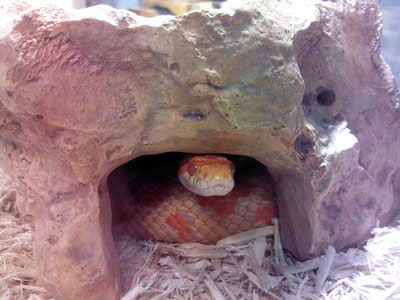
You should provide some kind of a hide box. Hides are commercially available these days. You must also provide a tree branch for the snake to climb and rest. Make sure that the tree branch you provide is debugged and disinfected properly. You can do this easily. First soak the branch in a solution of chlorine and water. After rinsing it thoroughly, soak it in clean water. After drying the branch in sunlight, place it in the snake’s enclosure.
Substrate
There are a few substances that can be used as substrates for corn snakes. You can use Pine chips, outdoor and indoor carpeting materials, Astroturf and the like. Cedar chips should not be used since they are toxic in nature. If you use Astroturf or carpeting as substrates, you have to wash and dry them thoroughly before using them again. It would be better to have two pieces of the stuff for rotation. If your snake is not seen in the enclosure for some time, do not worry. The snakes will burrow under the substrate and stay hidden for quite some time. If you use pine chips, cypress mulch or aspen shavings, the urine and feces can be scooped out and fresh chips or shavings added. Urine soaked substrates can easily become a breeding ground for bacteria and fungus. In the case of such substrates, feeding of the snake should be in a separate enclosure since accidental ingestion of the substrate chips could pose quite a few health problems for your pet.
Food
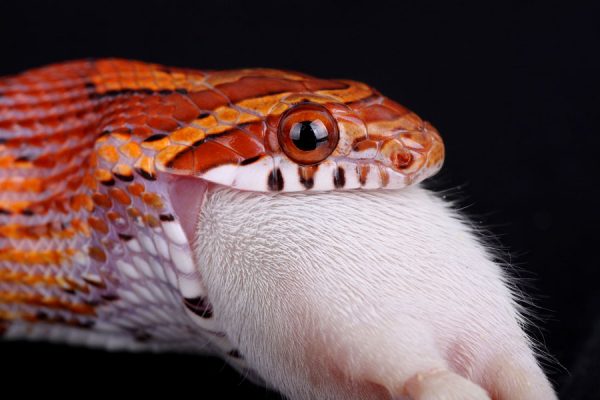
You can start feeding hatchlings with pinky mice. Then you improve the diet to include fuzzy mice, crews and finally, adult mice. It is always better to feed the hatchlings as well as the adults, pre-killed rodents.
An active, adult snake will be only happy to feed once in ten days. Remember to feed them only pre-killed prey. Live rodents can end up injuring your pet. You would not want to see your pet’s prospective meal harming your pet making a meal of it.
You can by rodents in bulk and freeze them. Many members of the herpetology societies do breed mice and they would pre-kill them for you. After removing the prey from the freezer, you most allow them to thaw out to room temperature before feeding them to your snake. You can use tongs or forceps to hold the prey by the tail and dangle them in front of your snake for it to strike at the prey. Most snakes will eat the prey that is placed in the tank. If you have a wild caught corn snake, you can occasionally offer it quail’s egg. If the snake develops a liking for it, offer one, once in two weeks. Never make the quails egg a regular diet for your snake.Since the eggs you buy from the hatcheries or department stores are unlikely to be fertilized, never make them a part of your pet’s regular diet.
You should start by feeding the hatchlings pinky mice and increase the prey size as they grow up. A fully grown Corn snake can eat a medium sized or large mouse. Large snakes can consume rats. If the prey is more than it can it can possibly accommodate, your snake might regurgitate the prey.
Water
Always place a bowl of fresh, clean water in the enclosure. The snake will use it for drinking and occasional bathing. Should your pet defecate in the bowl, be sure to clean and disinfect the bowl before using it again.
Handling
Corn snakes do not respond to handling in the same comfortable way as a python or a king snake. The python might nudge your hands and nuzzle against them. They appear to be so trusting. The same is the case with king snakes. The corn snakes might be small, but they are certainly strong. Support the body and give the head free rein. Guide the head gently to where you want it to go if you feel he snake is heading in the wrong direction.. These snakes are nervous in new situations and with new people. Give them ample time to settle down before you allow people to handle them.

Having discovered a fondness for insects while pursuing her degree in Biology, Randi Jones was quite bugged to know that people usually dismissed these little creatures as “creepy-crawlies”.

